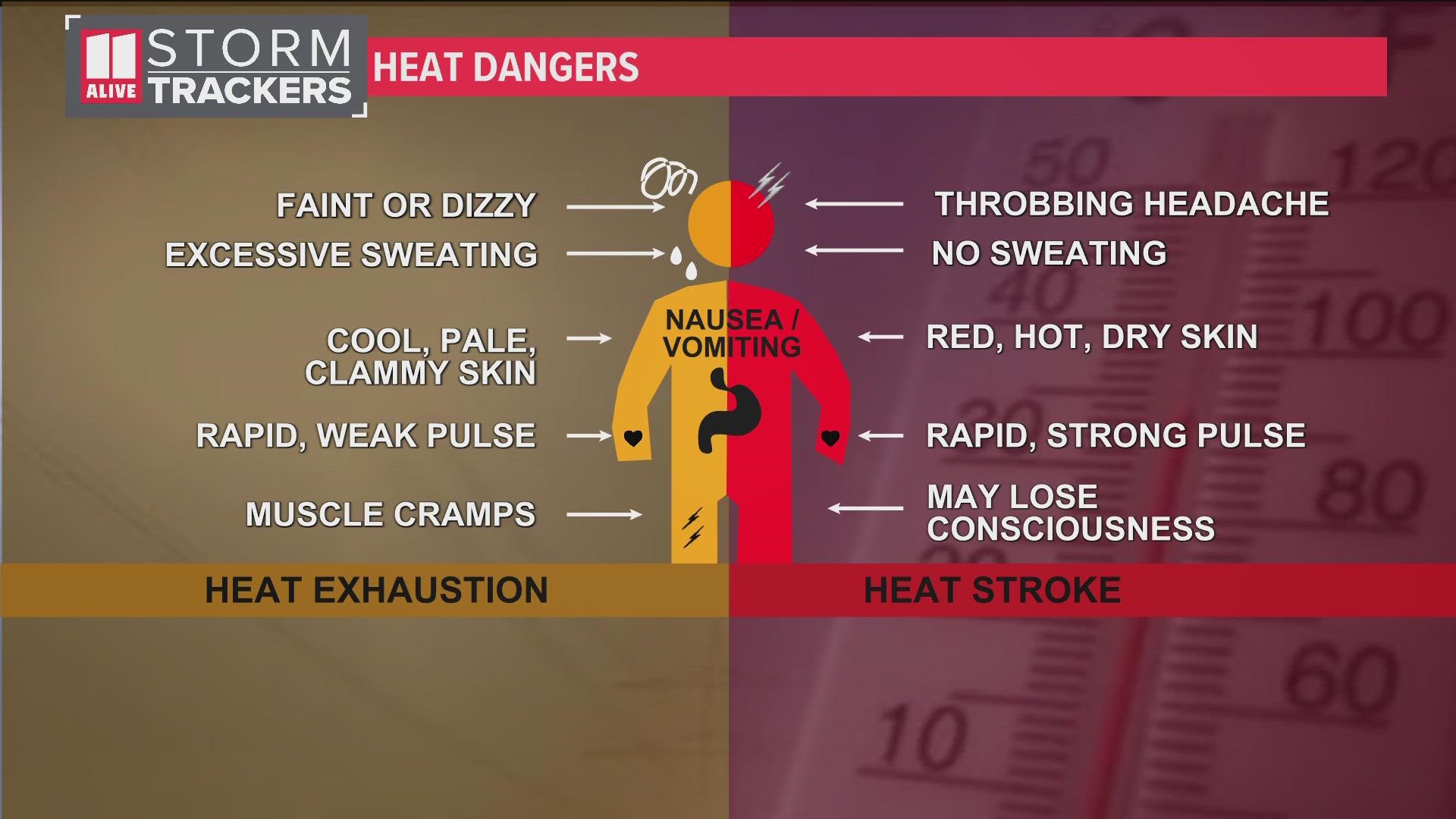Why Your Forecast Might Not Include An Excessive Heat Warning

Table of Contents
Limitations of Current Forecasting Technology
The accuracy of any weather forecast, including heat forecasts, depends heavily on the capabilities of current technology. While advancements are constantly being made, there are inherent limitations that can affect the precision of an Excessive Heat Warning.
Resolution and Accuracy:
- Grid Resolution: Weather models use grids to represent the Earth's atmosphere. The smaller the grid resolution (the finer the detail), the more accurate the prediction. However, higher resolution requires significantly more computing power and data, making extremely localized predictions of extreme heat challenging. This means that a model might accurately predict high temperatures for a large region, but miss a localized "heat island" effect in a specific urban area.
- Microclimates: Factors like urban heat islands, topography, and proximity to water bodies can dramatically influence local temperatures. Accurately forecasting these microclimates requires highly detailed data and sophisticated modeling techniques that are not always available or feasible.
- Data Collection Challenges: Accurate weather forecasts depend on reliable data from weather stations. Sparse data coverage, especially in rural areas or developing countries, can hinder the ability to accurately predict localized extreme heat events and thus impact the issuance of a timely Excessive Heat Warning.
Data Availability and Quality:
- Inconsistent Data: Variations in the quality and consistency of data from different weather stations can lead to inaccuracies in the overall heat forecast. This can significantly impact the prediction of regional and local extreme heat, potentially leading to the absence of a heat warning in certain areas.
- Dataset Differences: Different meteorological agencies may use different datasets and modeling approaches, resulting in variations in their heat forecasts. This lack of standardization can make it challenging to achieve consistent and accurate Excessive Heat Warnings across regions.
Thresholds and Criteria for Issuing Excessive Heat Warnings
Determining when to issue an Excessive Heat Warning involves more than just looking at temperature readings. Various factors influence this critical decision.
Varying Definitions Across Regions:
- Temperature Thresholds: Different meteorological agencies around the world utilize different temperature thresholds for issuing heat warnings. A temperature that triggers a heat warning in one region might not meet the criteria in another, leading to variations in alert levels. These thresholds also often account for local factors, like typical summer temperatures.
- Regional Differences: Local conditions significantly influence the severity of heat waves. High humidity in one area can result in a much higher heat index than the same temperature in a dry region, impacting the decision to issue a warning.
Focus on Impact, Not Just Temperature:
- Heat Indices: Meteorological agencies frequently use heat indices like the heat index (combining temperature and humidity) or humidex (used in Canada) to assess the actual felt temperature and potential health risks. These indices provide a more comprehensive measure than temperature alone when deciding on an Excessive Heat Warning.
- Vulnerability Factors: The decision to issue a warning also considers the vulnerability of the population. Areas with a high percentage of elderly individuals, people with pre-existing health conditions, or those lacking access to air conditioning might receive a heat warning at a lower temperature threshold than areas with a healthier and more resilient population.
Communication Gaps and Delays
Even with an accurate heat forecast, effectively communicating the Excessive Heat Warning is crucial.
Dissemination Challenges:
- Reaching Vulnerable Populations: Ensuring that warnings reach all members of the community, particularly vulnerable populations, presents a challenge. This includes translating alerts into multiple languages, providing accessible formats for individuals with disabilities, and utilizing multiple communication channels beyond traditional media.
- Effective Communication Strategies: The success of an Excessive Heat Warning relies heavily on clear and understandable messaging. Communicating the potential risks and necessary precautions effectively helps individuals prepare and protect themselves.
Time Lags in Warning Systems:
- Data Processing and Analysis: Processing weather data, running models, and analyzing the results takes time. These delays can sometimes contribute to a delay in issuing official warnings, particularly for rapidly developing heat waves.
- Institutional Protocols: Bureaucratic procedures and internal communication protocols within meteorological agencies can also contribute to delays in issuing Excessive Heat Warnings.
Conclusion:
The absence of an Excessive Heat Warning in your forecast doesn't necessarily mean there's no risk of extreme heat. This article highlighted the complexities involved: the limitations of current forecasting technology, the varying criteria for issuing warnings, and challenges in effectively communicating these alerts. Understanding these limitations is crucial. Stay informed about heat waves by checking your local weather forecast regularly for heat alerts, and always be prepared to take personal precautions to protect yourself from excessive heat. Refer to your national weather service for heat safety guidelines and resources to stay informed about potential Excessive Heat Warnings in your area.

Featured Posts
-
 Alcaraz Vs Musetti Rolex Monte Carlo Masters 2025 Final Preview
May 30, 2025
Alcaraz Vs Musetti Rolex Monte Carlo Masters 2025 Final Preview
May 30, 2025 -
 Der 10 April Historische Ereignisse Und Aktuelle Nachrichten
May 30, 2025
Der 10 April Historische Ereignisse Und Aktuelle Nachrichten
May 30, 2025 -
 Deborra Lee Furness On Her Marriage Breakdown With Hugh Jackman Gratitude And Resilience
May 30, 2025
Deborra Lee Furness On Her Marriage Breakdown With Hugh Jackman Gratitude And Resilience
May 30, 2025 -
 Revolucionando La Compra De Entradas Ticketmaster Introduce Virtual Venue
May 30, 2025
Revolucionando La Compra De Entradas Ticketmaster Introduce Virtual Venue
May 30, 2025 -
 Raducanu Through To Last Eight At Miami Open
May 30, 2025
Raducanu Through To Last Eight At Miami Open
May 30, 2025
